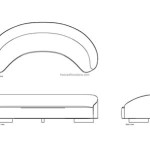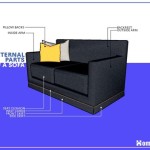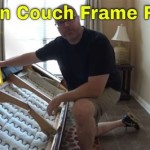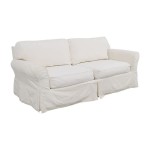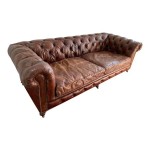Power Reclining Sofa Problems and Solutions
Power reclining sofas offer a significant upgrade in comfort and convenience compared to their manual counterparts. However, like any complex piece of furniture with mechanical and electrical components, they are prone to experiencing problems. Understanding the common issues and their potential solutions can help extend the lifespan of the sofa and ensure continued enjoyment.
Troubleshooting power reclining sofas involves a systematic approach. Before attempting any repairs, always disconnect the power supply. Consulting the owner's manual is also crucial, as it contains specific information about the sofa's features, maintenance recommendations, and potential warranty coverage. This article focuses on diagnosing and resolving common problems encountered with power reclining sofas.
Motor Malfunctions and Electrical Issues
One of the most frequent issues with power reclining sofas stems from the motor and the electrical system. The motor is responsible for the reclining mechanism, and any disruption to its function or the related wiring can render the reclining feature unusable.
Symptom: Sofa does not recline or return to the upright position. This is often the most obvious indication of a motor or electrical problem. Several factors could contribute to this issue. First, ensure the sofa is properly connected to a functioning power outlet. A tripped circuit breaker or a loose power cord can prevent the motor from receiving electricity. Check the circuit breaker in the electrical panel and reset it if necessary. Examine the power cord for any damage, such as cuts or fraying. If damage is present, replace the cord immediately. Consider testing the outlet with another appliance to confirm it is providing power.
Troubleshooting Steps:
1. Power Supply Check: Verify the power outlet is functioning. Use a multimeter to test the voltage at the outlet to ensure it is within the expected range.
2. Transformer Inspection: Many power reclining sofas utilize a transformer to convert the AC voltage from the outlet to a lower DC voltage for the motor. Examine the transformer for any signs of physical damage, such as burns or swollen components. Test the output voltage of the transformer with a multimeter. If the output voltage is significantly lower than the specified value, the transformer may need replacement.
3. Wiring Inspection: Carefully inspect all wiring connections between the power outlet, transformer, motor, and control buttons or remote receiver. Look for loose connections, frayed wires, or damaged insulation. Secure any loose connections and repair or replace damaged wires. Consider using a wire stripper and crimping tool to ensure secure and reliable connections.
4. Control Button/Remote Receiver Test: If the sofa uses control buttons or a remote control, test their functionality. Clean the buttons to ensure proper contact. If using a remote, replace the batteries. If the buttons or remote receiver are faulty, they may need replacement.
5. Motor Testing: To test the motor directly, carefully disconnect it from the control system. Apply the appropriate DC voltage directly to the motor terminals. If the motor runs when directly powered, it indicates that the motor itself is functional, and the issue lies elsewhere in the control system. If the motor does not run, it may be faulty and require replacement. When replacing the motor, ensure the new motor is compatible with the sofa's specifications.
Symptom: Motor operates intermittently or makes unusual noises. This could indicate a problem with the motor's internal components or a partial electrical connection. Intermittent operation can be caused by a loose wire or a failing component within the motor itself. Unusual noises, such as grinding or clicking, may suggest worn gears or bearings within the motor assembly.
Troubleshooting Steps:
1. Listen Carefully: Pay close attention to the type of noise the motor is making. A grinding noise could indicate mechanical wear, while a buzzing noise may suggest an electrical issue.
2. Inspect Motor Mounts: Ensure the motor is securely mounted to the sofa frame. Loose motor mounts can cause vibrations and noise.
3. Lubricate Moving Parts: If the motor has accessible moving parts, such as gears or linkages, apply a small amount of lubricant to reduce friction and noise. Use a lubricant specifically designed for electrical components.
4. Professional Inspection: If the motor continues to operate intermittently or makes unusual noises after performing these steps, it is recommended to consult a qualified technician. Internal motor repairs can be complex and require specialized tools.
Mechanical Issues with the Reclining Mechanism
Beyond the electrical components, the mechanical reclining mechanism itself can be a source of problems. This mechanism consists of levers, gears, and linkages that allow the sofa to recline and return to its upright position.
Symptom: Sofa reclines unevenly or gets stuck. This often points to a problem with the mechanical linkages or the frame of the sofa. Uneven reclining can be caused by bent or misaligned linkages, while getting stuck may result from obstruction or binding within the mechanism.
Troubleshooting Steps:
1. Visual Inspection: Carefully examine the reclining mechanism for any signs of damage, such as bent levers, broken linkages, or loose screws. Pay close attention to the alignment of the various components.
2. Obstruction Removal: Check for any obstructions that may be preventing the mechanism from moving freely. This could include debris, clothing, or other objects that have become lodged within the mechanism.
3. Lubrication: Apply a lubricant to the moving parts of the reclining mechanism. This can help reduce friction and improve the smoothness of operation. Use a lubricant specifically designed for metal-on-metal contact.
4. Linkage Adjustment: If the reclining is uneven, attempt to adjust the linkages to ensure they are properly aligned. This may require loosening screws and carefully repositioning the linkages. Consult the owner's manual for specific adjustment instructions.
5. Frame Inspection: Ensure the sofa frame is solid and not damaged. A bent or broken frame can cause the reclining mechanism to bind or operate unevenly.
Symptom: Excessive noise during reclining. Squeaking, creaking, or popping noises during reclining often indicate friction or wear within the mechanical components. These noises can be caused by dry joints, worn bushings, or loose connections.
Troubleshooting Steps:
1. Identify the Source: Attempt to pinpoint the source of the noise. This can be done by carefully reclining the sofa while listening closely to the mechanism.
2. Lubrication: Apply lubricant to the suspected source of the noise. Focus on joints, hinges, and areas where metal parts come into contact. Work the lubricant into the mechanism by repeatedly reclining the sofa.
3. Tighten Connections: Check all screws and bolts in the reclining mechanism and tighten any that are loose. Loose connections can cause noise and instability.
4. Bushing Replacement: If the noise persists after lubrication and tightening connections, the bushings may be worn and require replacement. Bushings are small, often plastic, components that reduce friction between moving parts.
Fabric and Upholstery Issues
While not directly related to the power reclining functionality, fabric and upholstery issues are common concerns for sofa owners. These issues can affect the appearance and comfort of the sofa.
Symptom: Tears, stains, or excessive wear on the upholstery. These issues are often caused by normal wear and tear, spills, or improper cleaning. The severity of the problem dictates the appropriate solution.
Troubleshooting Steps:
1. Cleaning: For stains, attempt to clean the upholstery using a cleaner specifically designed for the fabric type. Follow the manufacturer's instructions carefully. Test the cleaner on an inconspicuous area of the sofa first to ensure it does not cause discoloration or damage.
2. Professional Cleaning: For stubborn stains or extensive soiling, consider hiring a professional upholstery cleaner. Professional cleaners have specialized equipment and knowledge to effectively clean a variety of fabrics.
3. Repair: Small tears or holes can sometimes be repaired using a fabric repair kit. These kits typically include patches, adhesives, and color-matching compounds.
4. Reupholstering: For extensive damage or wear, reupholstering the sofa may be necessary. This involves removing the existing fabric and replacing it with new fabric. Reupholstering is a more costly option, but it can significantly extend the lifespan of the sofa.
5. Preventative Measures: To prevent future upholstery issues, consider using furniture protectors, such as slipcovers or throws. Regularly vacuum the upholstery to remove dust and debris. Address spills promptly to prevent staining.
Symptom: Sagging cushions. The cushions of a power reclining sofa can sag over time due to compression of the filling material. This can affect the comfort and appearance of the sofa.
Troubleshooting Steps:
1. Fluffing: Regularly fluff the cushions to redistribute the filling material. This can help restore their shape and support.
2. Cushion Rotation: Rotate the cushions periodically to even out wear. This will help prevent certain areas from becoming excessively compressed.
3. Cushion Refilling: If the cushions are severely sagging, consider refilling them with new filling material. This can be done at home using materials such as polyester fiberfill or foam inserts, or by a professional upholstery service.
4. Support Reinforcement: Depending on the sofa's design, it may be possible to add additional support beneath the cushions. This can be done by inserting plywood or other rigid materials between the cushions and the sofa frame.
Addressing these potential problems and implementing the recommended solutions can significantly prolong the life and maintain the comfort of a power reclining sofa. Recognizing the symptoms and systematically investigating the root cause allows for effective troubleshooting and repair, ensuring continued enjoyment of this valuable piece of furniture.

5 Problems With La Z Boy Power Recliners

Fix Your Recliner Chair Issues Diy Repair Guide

6 Common Problems With Power Lift Recliners At La Z Boy Solutions

How To Fix Reclining Chair Or Sofa

How To Fix Leather Furniture 6 Common Problems And Solutions
Matteus Fabric Power Reclining Sofa With Drop Down Table Costco

Charlie Blue Leather Power Reclining Sofa El Dorado Furniture

Daytona Dual Power Reclining Sofa Badcock Home Furniture More

Flexsteel Cougar Cappuccino Power Reclining Sofa Gallery Furniture

Have A Question About Furniture Of America Dacious 90 25 In W Gray And Black Faux Leather 3 Seat Sofa With Usb Charger Pg 1 The Home Depot


